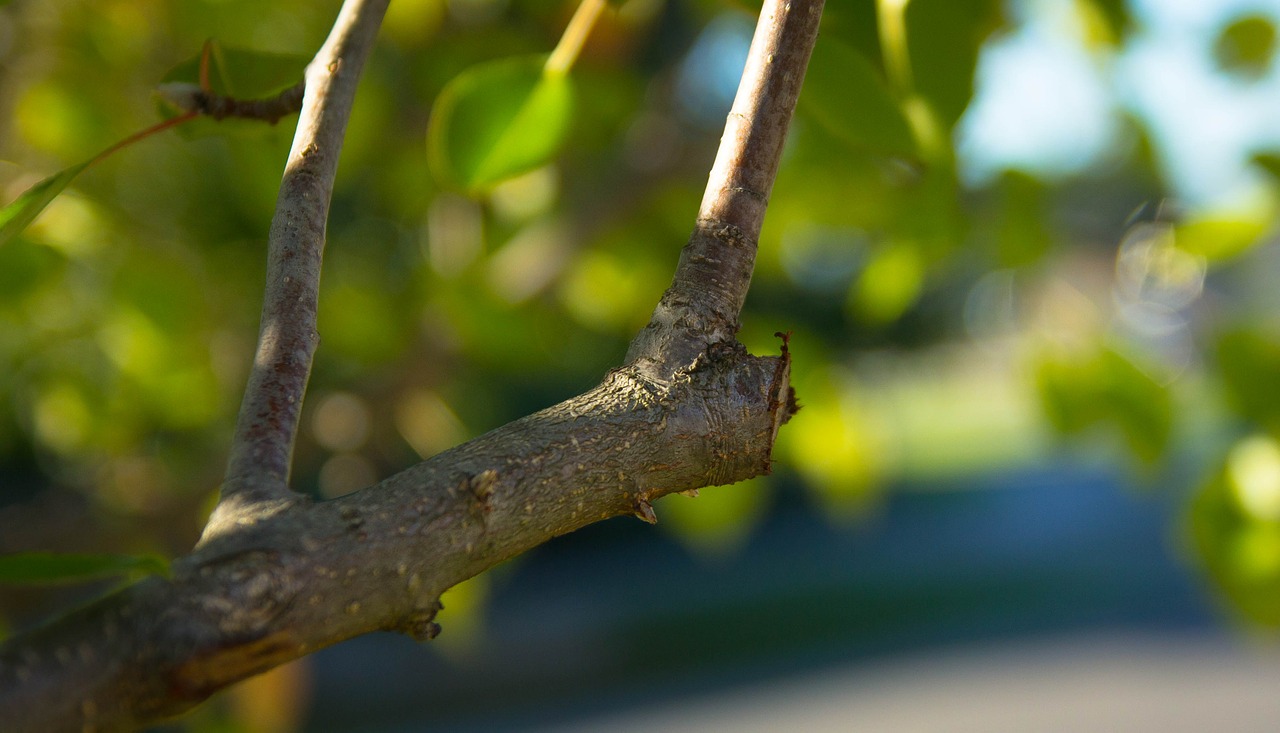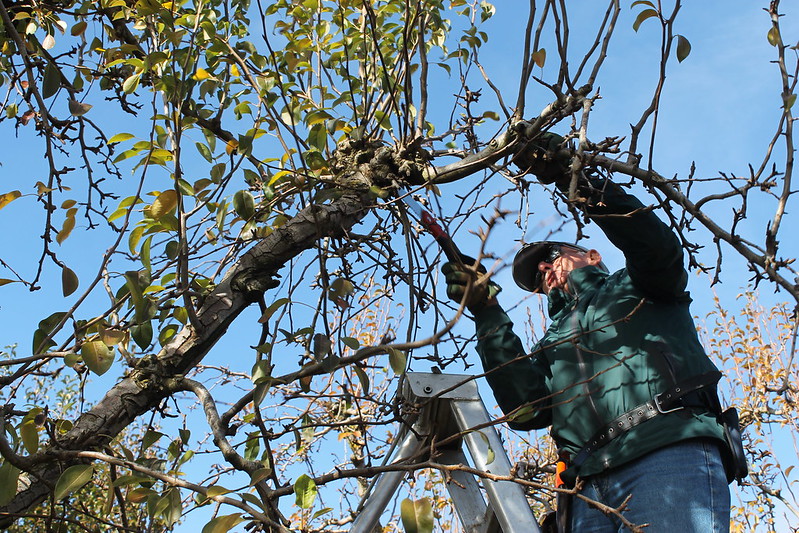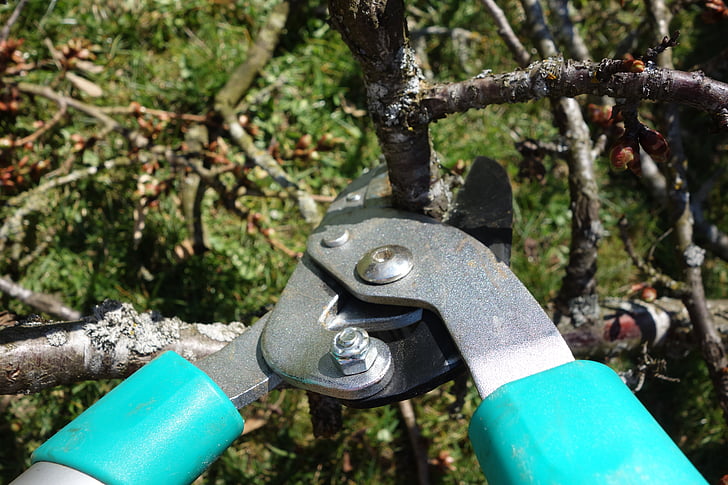
Pruning may not top your list of favorite landscaping activities, but it’s a vital part of caring for your trees. It’s just as important to know why, when, and how to safely prune your trees.
Why Prune

Pruning helps shape trees, promotes growth, and keeps people and property safe. When you prune, you’re selecting branches to remove while retaining the tree’s natural shape. Pruning helps make trees healthier by removing broken, dead, or dying branches. You can also prevent injury and property damage by pruning branches that could fall.
When to Prune
When to prune depends on what you’re pruning. According to the Virginia Cooperative Extension Office, “Late winter or early spring, before bud break, is usually the best time to prune many species because new tissue forms rapidly. However, pruning should be delayed for most spring-blooming shrubs until immediately after flowering to avoid reducing the floral display.”
The extension office says you should remove dead, dying, or diseased branches immediately, no matter the season. This is especially important after a storm. But you shouldn’t prune if the weather turns cold because cutting back branches triggers new growth which often can’t hold up against the cold. This is why fall pruning isn’t ideal. Fungi also spread more rapidly in the fall and can infest a newly pruned tree.
Deciduous trees
Trees that drop their leaves each year need pruning in late winter or early spring. Pruning a tree when its dormant makes it easier to see its shape without the leaves. The tree will heal in less time, and pruning won’t have as much of an impact on future growth.
Evergreens
You don’t have to prune evergreen trees as often. Many conifers fall into this category, along with some broad-leaf trees like hollies. As with any tree, prune damaged branches immediately. It’s best to prune evergreens when they’re young, then leave them alone as they mature.
Flowering trees
You should prune spring-blooming flowering trees and shrubs right after they bloom. These species develop their flower buds the previous fall. If you prune them in late winter or early spring, you’ll be trimming off some or all their blossoms. Trim late summer or fall-blooming trees in late winter or early spring. This will allow them enough time to set their buds and blossom during the upcoming season.
How to Prune

Pruning starts when you plant a tree. By pruning while a tree is young, you can avoid problems down the road. It’s much easier to cut branches when they’re small, instead of when they’re bigger as the tree matures.
The most common pruning tools are hand-held shears, loppers, pole pruners, and saws. No matter which tools you’re using, make sure they’re in good working order and that the blades are sharp. Use handheld shears for branches that are 3/4 of an inch or smaller. Lopping shears have longer handles and can cut branches up to 1-3/4 inch in diameter. Pole pruners allow you to stand on the ground and make higher cuts. Hand saws can cut branches from 1-4 inches in diameter.
For big branches, chainsaw
Chainsaws are the best best for branches larger than 4 inches in diameter. Don’t use a chainsaw to reach above your shoulders or when you’re standing on a ladder. It’s a good idea to call an expert to prune large trees. It’s also wise to call in the professionals if power lines are involved.
Be sure to wear protective equipment when you’re pruning your trees. This includes gloves and safety goggles. A long-sleeved shirt, long pants, and sturdy shoes are also good ideas.
Diseased branches
If you’re cutting off a diseased branch, dip shears in a disinfectant like rubbing alcohol between cuts. This will help avoid spreading the disease. You’ll also want to prune vertical branches and branches that are crossing or rubbing against each other.
Larger branches will need three or four cuts. This will keep the branch from falling and stripping bark and stem tissue off the tree. Your first cuts should be at least 18 inches from the trunk. Make the next cut an inch or so from the trunk, and the final cut at the branch collar (more below).
Proper cutting technique
When you’re pruning, don’t cut the branch flush with the tree. Flush cuts won’t seal properly, and they can do permanent damage to the tree. Also, don’t cut too far from the trunk and leave a stub. The tree won’t heal, and insects could get into the tree through the stub. Cut the branch just outside of the branch collar. This is the swollen part where the branch intersects with the tree.
Pruning is one of the best things you can do to keep your trees healthy and manageable. Use these tips to help you get started and to help your trees live long and strong for years.
Talk to a Virginia Beach landscaping expert if you need help selecting trees for your landscape. LawnStarter can connect you with passionate lawn care and landscaping pros with helpful advice.